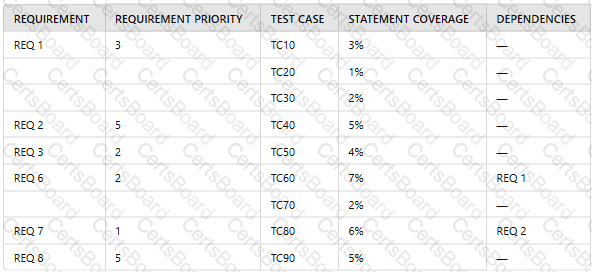Which TWO of the following are benefits of continuous integration?
I. Allows earlier detection and easier root cause analysis of integration problems and conflicting changes.
II. Removes the need for manual test analysis, design and execution.
Hi. Removes the dependency on automated regression packs when integrating larger systems, or components.
iv. Gives the development team regular feedback on whether the code is working.
Select the correct answer:
A test manager decided to skip static testing since he believes bugs can be found easily by doing dynamic testing. Was this decision right or wrong?
Consider the following user story about the authentication functionality of an e-commerce website:
"As a logged-in user, I want to change my current password with a new one, so that I can make my account safer".
The following are some of the acceptance criteria defined for the user story:
[a] After the logged-in user has successfully changed his password, an email confirming the change must be sent to him
[b] To successfully change the password, the logged-in user must enter the current password, enter a new valid password, and finally confirm by pressing the 'Change Password' button
[c] To be valid, the new password entered by the logged-in user is not only required to meet the criteria related to the length and type of characters, but must also be different form the last 5 passwords of that user
[d] A dedicated error message must be presented to the logged-in user when he enters a wrong current password
[e] A dedicated error message must be presented to the logged-in user when he enters the correct current password, but enters an invalid password
Based only on the given information, which of the following ATDD tests is most likely to be written first?
For the same financial institution in Question 12, with the same requirements and expectations, what would be the most likely investment values used in testing if two-point boundary value analysis is used to design test cases specific to the 13% interest rate equivalence partition?
Which of the following is a test-first approach, where tests that express a shared understanding from stakeholders of how the application is expected to work, are first written in business-readable language (following the Given/When/Then format), and then made executable to drive development?
Which of the following statements best describes the way in which decision coverage is measured?
Consider the following table, which contains information about test cases from the test management system:

Which ONE of the following optionsorganizes the test cases based on the statement coverage strategy, while considering practical constraints?


